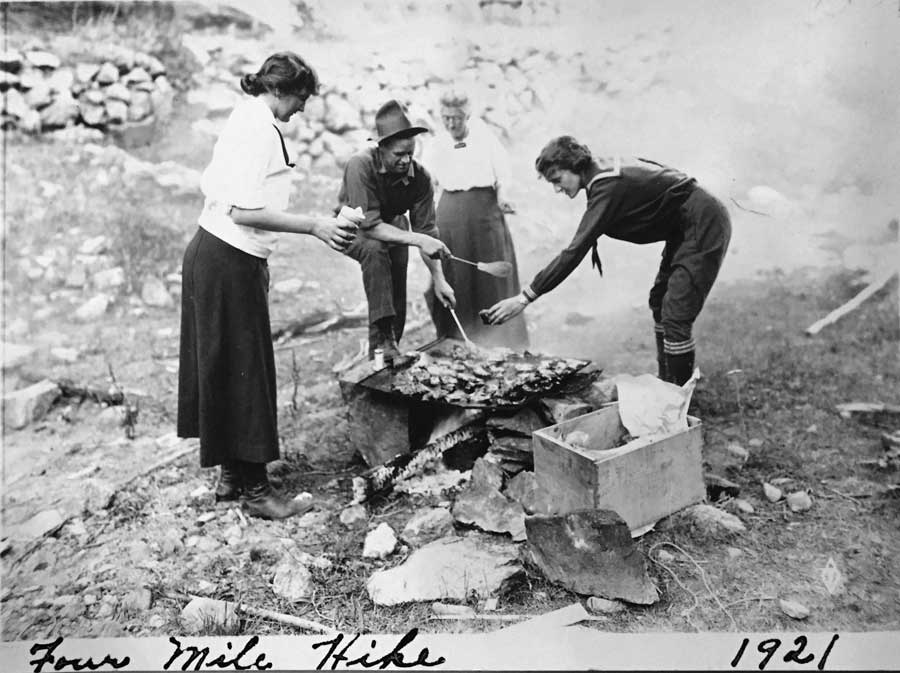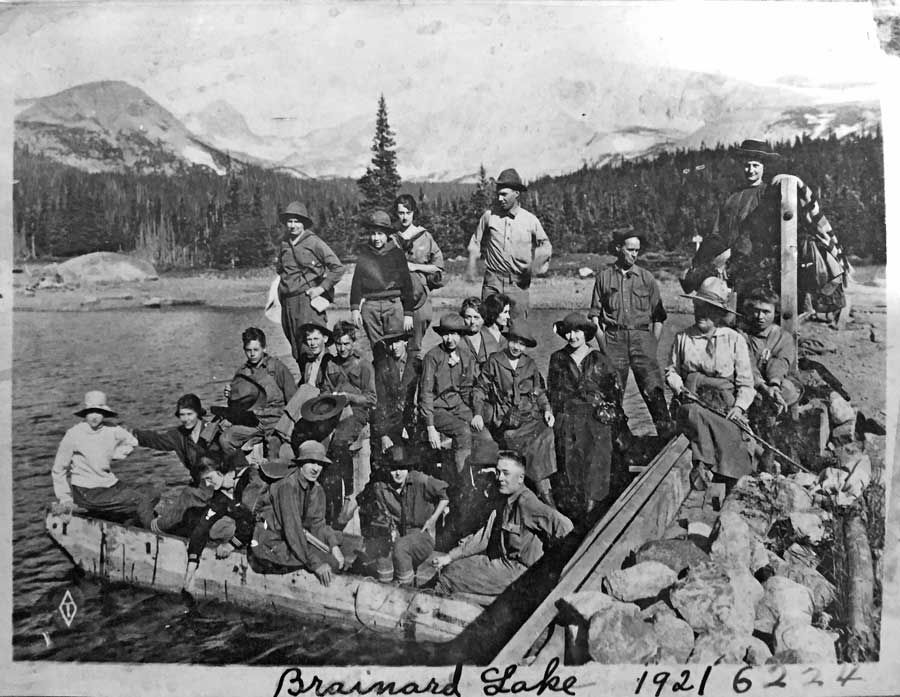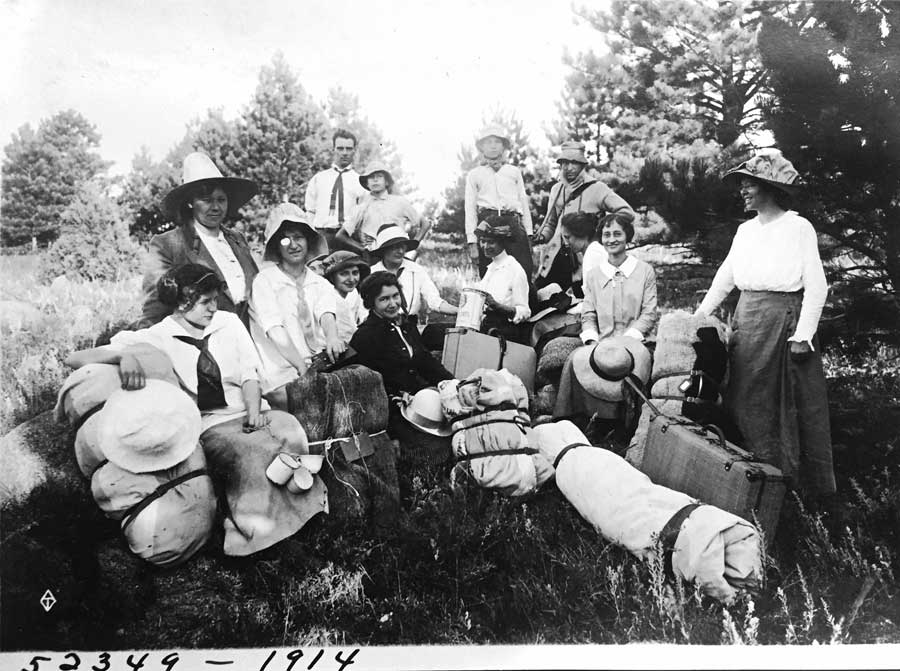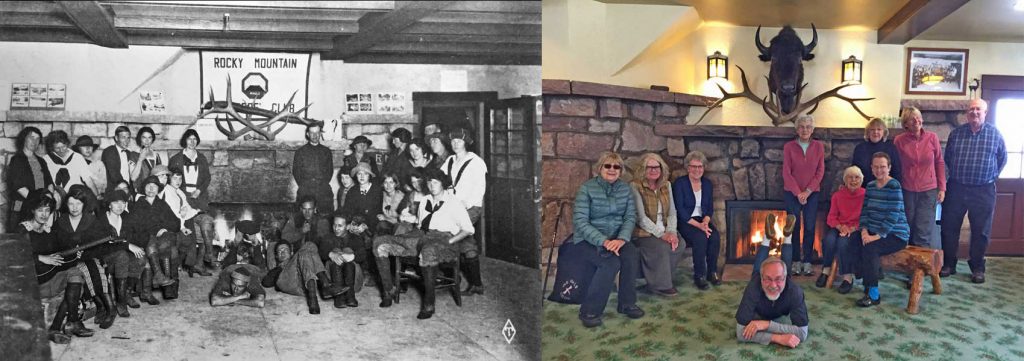Hike with Rocky Mountain Climbers Club
28 Nov 2017
We have maps and apps to guide us. Do we still need a club?
By Kay Turnbaugh Imagine living and working in the pioneer town of Boulder in the late 1800s or early 1900s. The wild mountains beckoned to the west, but not many people had a wagon or a car, and only a daring few ventured onto the rugged dirt roads. And once those roads petered out, there were no trails. You needed to find a guide, someone you could trust.
(photo courtesy RMCC)


Pioneer Spirit
Ninety-nine years ago the RMCC contributed funds to help build the Community House in Chautauqua Park. The club maintains perpetual ownership of its elegant lower-level meeting room, where members host potlucks, talks and slideshows. During the winter, weather permitting, they go on hikes like Doudy Draw. In the summer they hold events at the club’s cabin at Peterson Lake near Eldora Mountain Resort. The club bought the cabin in 1953 and rebuilt it after it burned down in 1978.
Nederland resident Kay Turnbaugh is the author of The Last of the Wild West Cowgirls, Rocky Mountain National Park Dining Room Girl and Images of America Around Nederland.












